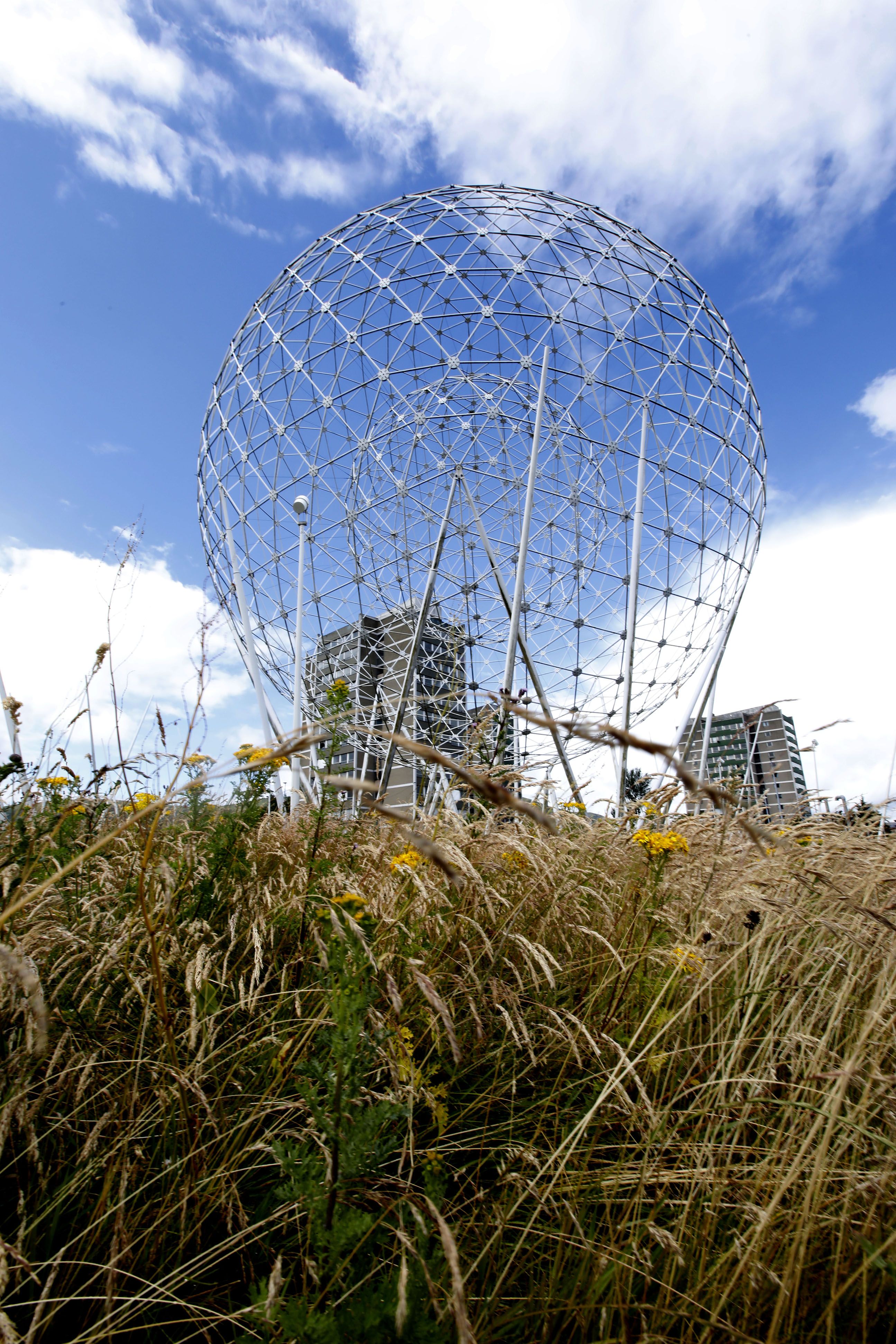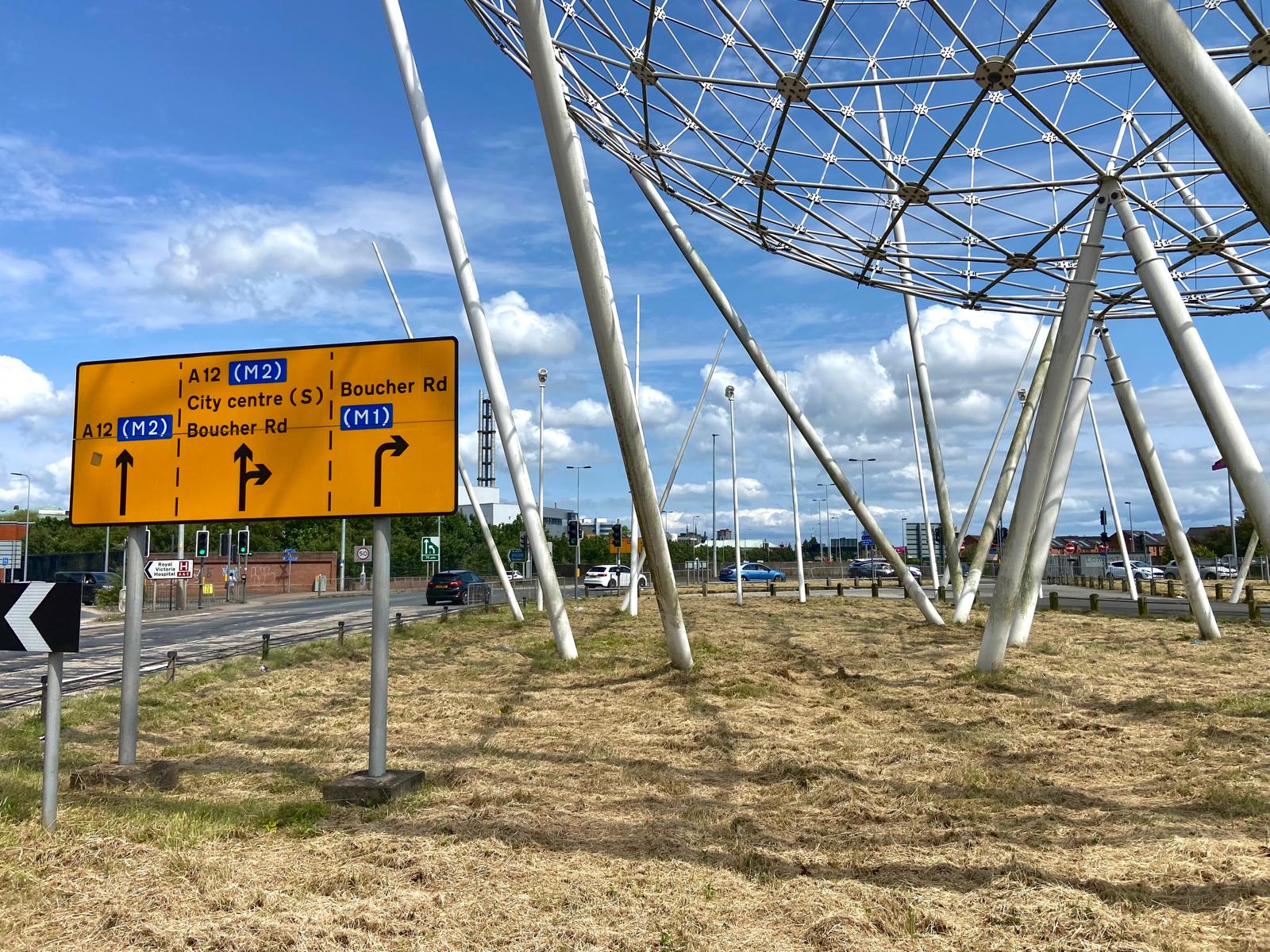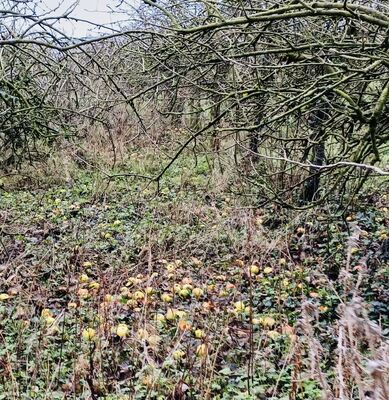JUST a week after Dúlra hailed the authorities for letting wildflowers flourish under the Balls on the Falls, they were all obliterated.
Dúlra along with many motorists had loved the splash of colour as nature was allowed to bloom in the middle of one of our busiest intersections. Bees, butterflies and insects had all returned and Dúlra even imagined a time when ground-nesting birds like meadow pipits and skylarks could possibly set up home there. If any of those birds were flying over it in the last couple of weeks, they would certainly have been considering colonising the new wilderness.
But apparently all that was too much to hope for. The mechanical scythe moved in this week and wiped it all out. What is left is a scorched earth with no flowers, bees or indeed life at all.
The Stormont department which cuts verges had announced that, in a bid to aid biodiversity, there would be only two cuts a year on most areas. It would require us all re-educating ourselves. What seems nice in our eyes – short green lawns – is bad for nature. We are all going to have to get used to ‘unkempt’ verges and overgrown roundabouts.
Dúlra thought those two annual cuts would come at the start and end of the year. Mid-July is when nature is coming to its pinnacle, when the days are long and warm and humid. Growth is at its greatest in mid-summer, just before the year turns and a slow decline sets in.
Birds are on to their second clutch of eggs and insects are in the middle of their life cycle.
How the area looked just last week with the long grass
Last year Dúlra was astounded to hear a grasshopper in his own garden after he left the grass uncut. And that was in the second week of August. Any young grasshoppers under the Balls on the Falls were just about to hit adulthood when the blades destroyed their world this week.
Yes, we have to be cognisant of safety concerns for road users. But we share this world with countless beautiful creatures, great and small, and we need to co-exist with them.
The only thing worse than shearing our verges is giving nature false hope – letting those wildflowers grow and bloom – before chopping them down in their prime.
• Wouldn’t it be ironic if, after all the anticipation and years of planning that the new Casement stadium was held up by... swallows?
Dúlra went down this week to see if the fabulous birds that nest under the roof of the stand were still there. A half dozen pairs build their mud nests there and when games used to be played, they could be seen skimming the grass, picking up flies even as the players were on the pitch. There was many’s an Antrim game when, for Dúlra at least, the birds were more entertaining than the players on the field!
Swallows, fáinleog in Irish, are perhaps the most beautiful of all our birds, with a shiny green-blue back and a red bib under their beak. But it’s when in full flight that they come into their own, twisting and turning with the grace of an Olympic floor gymnast.
And of course if the birds are still nesting under the roof, the stand can’t be pulled down – the builders would have to wait until October when the birds head back to Africa.
Imagine the headlines: Casement plans sunk by swallows!
But Dúlra discovered this week that the developers are one step ahead and have covered the whole stand with a fine net to keep the swallows out.
It shows that with Casement, nothing has been left to chance. Maybe in four years' time, those Casement swallows will return to build their nest under the roof of the spectacular new 31,500-capacity stadium.
• If you’ve seen or photographed anything interesting, or have any nature questions, you can text Dúlra on 07801 414804.






